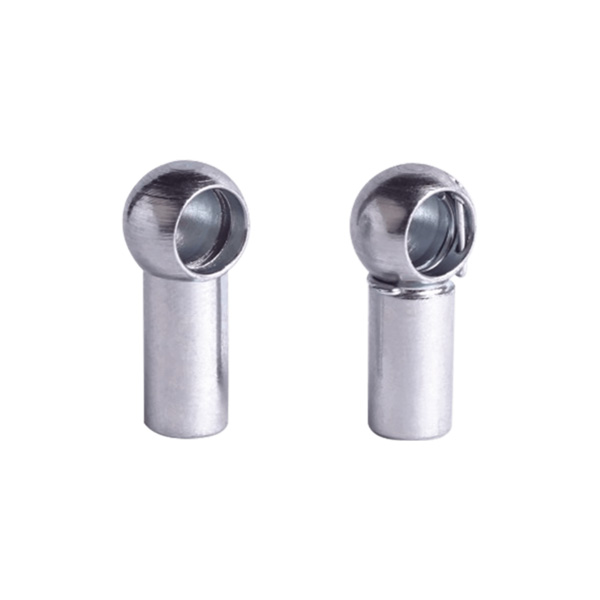What are the symptoms of a failing ball joint?
2025-07-09
As the core component for achieving multi-directional rotation in mechanical systems, ball joints are widely used in automotive steering mechanisms, industrial robotic arms, hydraulic equipment and other fields. Although its structure is simple, it bears the dual functions of transmitting power and flexible steering. Once a fault occurs, it may cause abnormal operation of the equipment or even a safety accident. Timely identification of fault symptoms is crucial to ensure the stable operation of the equipment.

Stuck and abnormal noise: direct signal of motion obstruction
When the ball joint is working normally, it should rotate smoothly. In the early stage of the fault, it is often manifested as motion stuck. During the operation of the equipment, the joint may suddenly get stuck when it rotates to a certain angle, and a greater external force is required to continue to move. This is mostly caused by uneven wear between the ball and the socket or foreign matter stuck. At the same time, stuck is often accompanied by abnormal sounds - the "squeak" of metal friction may be caused by insufficient lubrication or surface rust; the "click" may be caused by loose parts inside the joint, such as the failure of the locking device causing the ball to move. In the automotive steering system, this abnormal noise may change with the steering wheel rotation frequency. In severe cases, it affects the steering accuracy and increases driving risks.
Looseness and offset: Typical manifestations of connection failure
The tightness of the ball joint is the basis for ensuring power transmission, and looseness is a common symptom of failure. During inspection, it can be found that the gap between the joint and the connected parts is increased, and there is obvious displacement when manually shaking; on industrial robot arms, it may be manifested as inaccurate positioning of the end effector and repeated action errors exceeding the normal range. Offset is more hidden, and the center axis of the ball socket deviates from the designed position, resulting in uneven force during equipment operation, which will aggravate the wear of other parts in the long term. For example, after the ball joint of the hydraulic cylinder is offset, it may cause the piston rod to bend and affect the pressure stability of the hydraulic system.
Seal failure and leakage: Early warning of environmental erosion
Ball joints with sealing structures (such as joints in hydraulic equipment) are prone to seal failure when they fail. It is manifested as traces of oil, gas or dust leakage around the joint: in hydraulic systems, leakage will cause pressure drop and insufficient equipment power; pneumatic equipment may be slow to move due to leakage. After the seal fails, external pollutants are more likely to invade the inside of the joint, accelerating the wear of the ball and the socket, forming a vicious cycle of "leakage - pollution - aggravated wear". If it is in an industrial environment with a lot of dust, it may cause the joint to be completely damaged in a short time.
Overload fracture and loss of function: extreme results of fault deterioration
Long-term overload operation or material fatigue will cause cracks or even fractures in the ball and socket joint. The initial crack may only produce slight deformation when subjected to force. As the stress concentrates, the crack gradually expands, eventually causing the joint to suddenly break. In lifting machinery, this failure may cause heavy objects to fall; in the automobile suspension system, it may cause the body to tilt and control failure. Function loss also includes "locking" caused by severe wear-the ball and socket are completely stuck and cannot rotate, making the local movement function of the equipment completely ineffective. At this time, the machine must be shut down for maintenance, causing production interruption.
Failures of ball and socket joints are mostly related to improper maintenance: lack of regular lubrication, long-term operation in harsh environments, and use beyond the design load are all common causes. It is recommended to conduct regular inspections according to the equipment manual, focusing on rotation flexibility, tightness and sealing. Early intervention can significantly reduce maintenance costs and avoid losses caused by sudden failures.




